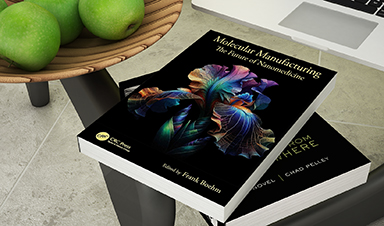The more that people know about gene editing, the more likely they are to feel it is safe to use in agriculture and medicine, according to a survey of more than 4,500 people across the United States.
While there is a technical difference between “gene editing” and “genetic modification,” also known as transgenics, people often lump the two biotechnologies together as genetic engineering. Gene editing does not introduce new biology to a genotype like gene modification.
Brandon McFadden, Tyson Endowed Chair in Food Policy Economics for the Arkansas Agricultural Experiment Station, was the lead author of a peer-reviewed study to find out more about the opinions of consumers in the United States on the safety of gene editing in agricultural and medical fields.
The research, which analyzed surveys taken in 2021 and 2022, was published in Frontiers in Bioengineering and Biotechnology this year.
“People who have heard or read a lot about gene editing generally have a favorable opinion about using it for agricultural or medical purposes,” McFadden said. “So, people who are less familiar with gene editing are likelier to think it is unsafe.”
The study, McFadden noted, showed that people who are not as familiar with gene editing are more likely to think it is unsafe, and they require more evidence to change their minds. That evidence could come from either more studies or time without a negative outcome.
The surveys showed that, on average, people with a negative opinion of gene editing’s safety need around 100 studies, or 20 years, to improve their opinion about the safety of gene editing.
However, McFadden noted that many people may never change their minds about the safety of gene editing. More than 10% of respondents stated that no amount of research or time without an adverse outcome would improve their opinion about the safety of gene editing for agriculture and medical products.
Co-author Kathryn A. Stofer, research associate professor in the agricultural education and communication department for UF/IFAS, said the results were enlightening on multiple levels and opens more avenues of research.
“The study sets us up to test explicit messages about the number of studies or years of research on this technology that might help alleviate concerns about safety and support the benefits,” Stofer said.
Kevin M. Folta, UF/IFAS professor in the horticultural sciences department, said better perceptions of gene editing are associated with awareness of biotechnology.
“That means scientists need to be engaging in conversations about the successes, like how sickle cell disease may be curable in the next few years,” Folta said. “We used to think that providing more evidence didn’t change opinions, but this work shows maybe we can change public perception if we effectively share the good things we can do with gene editing.”
Difference in gene editing and genetic modification
Gene editing is “the process of precisely changing or deleting a few ‘letters’ of DNA,” the researchers explained in the study. This is different from genetic modification, also known as transgenics, which introduces new biology to a genome.
Both gene editing and gene modification are used in agriculture to develop plant varieties that are more drought tolerant and disease resistant in less time than traditional breeding techniques. The study notes that a lack of proactive public dialogue surrounding the primary introduction of genetically modified organisms “did irreparable damage to the emerging scientific field of genetic engineering,” and that the continued expansion of gene editing in the agricultural and medical fields has led many to call for “broad public dialogue” about the technology.
Gene editing in the medical field is also known as “gene therapy” and aims to treat and cure disease or make the body better able to fight disease.
According to the Mayo Clinic, gene therapy “holds promise as a treatment for a wide range of diseases, such as cancer, cystic fibrosis, heart disease, diabetes, hemophilia and AIDS.” Research cited in the McFadden study showed that public opinion on gene editing in the medical field was more supportive for therapeutic uses than aversion for non-disease uses that are cosmetic.
Public opinion varies
Data were collected during two time periods using surveys distributed online by Qualtrics to samples of U.S. adults. The Institutional Review Board at the University of Delaware approved both surveys. Collecting data from two samples allowed researchers to examine the stability of results across groups of respondents and time.
Recent research on public opinion toward the use of biotechnology in agriculture has focused on differences in opinions between the use of gene editing and genetic modification. McFadden noted that studies published in 2019 and 2020 concluded that the public generally supports gene editing in agriculture more than genetic modification.
However, the objective of the new study was to explore U.S. public opinion about gene editing in the agricultural and medical fields. Another goal of the study was to provide more insight into the relationship between opinions about the safety of gene editing and the potential impact to improve opinions about safety.
Public acceptance seems to be associated with whether the gene editing is done for medical or agricultural purposes. The study noted that when participants in U.S. focus groups were asked what they thought about when hearing the words “gene editing,” the medical field was discussed more frequently and extensively than agriculture.
Researchers pointed out that in 2018 there was an announcement of gene-edited twins in China that increased public awareness of medical applications. Public aversion to the use of related biotechnology in agriculture has also been well-documented, McFadden added, despite support from the scientific community.
For example, he pointed to a 2014 Pew Research survey of U.S. adults and researchers affiliated with the American Association for the Advancement of Science estimating that 88% of its members agreed that genetically modified foods were safe to consume compared to only 37% of adults.
Results from the study indicate that people in the U.S. who are familiar with gene editing, or do not hold a negative opinion about safety, required less evidence to improve opinions about the safety of gene editing. On average, respondents in both samples were more familiar with gene editing in agriculture and more likely to have a positive opinion about its use in agriculture than for medical purposes.
“When we have a negative opinion about something, we should maybe ask ourselves what would cause us to change our minds,” McFadden said.
More information: Brandon R. McFadden et al, U.S. public opinion about the safety of gene editing in the agriculture and medical fields and the amount of evidence needed to improve opinions, Frontiers in Bioengineering and Biotechnology (2024). DOI: 10.3389/fbioe.2024.1340398
Provided by University of Arkansas System Division of Agriculture
News
Two New Books From Frank Boehm, NA Founder – To be Released Dec. 2025
Molecular Manufacturing: The Future of Nanomedicine This book explores the revolutionary potential of atomically precise manufacturing technologies to transform global healthcare, as well as practically every other sector across society. This forward-thinking volume examines [...]
What could the future of nanoscience look like?
Society has a lot to thank for nanoscience. From improved health monitoring to reducing the size of electronics, scientists’ ability to delve deeper and better understand chemistry at the nanoscale has opened up numerous [...]
Scientists Melt Cancer’s Hidden “Power Hubs” and Stop Tumor Growth
Researchers discovered that in a rare kidney cancer, RNA builds droplet-like hubs that act as growth control centers inside tumor cells. By engineering a molecular switch to dissolve these hubs, they were able to halt cancer [...]
Platelet-inspired nanoparticles could improve treatment of inflammatory diseases
Scientists have developed platelet-inspired nanoparticles that deliver anti-inflammatory drugs directly to brain-computer interface implants, doubling their effectiveness. Scientists have found a way to improve the performance of brain-computer interface (BCI) electrodes by delivering anti-inflammatory drugs directly [...]
After 150 years, a new chapter in cancer therapy is finally beginning
For decades, researchers have been looking for ways to destroy cancer cells in a targeted manner without further weakening the body. But for many patients whose immune system is severely impaired by chemotherapy or radiation, [...]
Older chemical libraries show promise for fighting resistant strains of COVID-19 virus
SARS‑CoV‑2, the virus that causes COVID-19, continues to mutate, with some newer strains becoming less responsive to current antiviral treatments like Paxlovid. Now, University of California San Diego scientists and an international team of [...]
Lower doses of immunotherapy for skin cancer give better results, study suggests
According to a new study, lower doses of approved immunotherapy for malignant melanoma can give better results against tumors, while reducing side effects. This is reported by researchers at Karolinska Institutet in the Journal of the National [...]
Researchers highlight five pathways through which microplastics can harm the brain
Microplastics could be fueling neurodegenerative diseases like Alzheimer's and Parkinson's, with a new study highlighting five ways microplastics can trigger inflammation and damage in the brain. More than 57 million people live with dementia, [...]
Tiny Metal Nanodots Obliterate Cancer Cells While Largely Sparing Healthy Tissue
Scientists have developed tiny metal-oxide particles that push cancer cells past their stress limits while sparing healthy tissue. An international team led by RMIT University has developed tiny particles called nanodots, crafted from a metallic compound, [...]
Gold Nanoclusters Could Supercharge Quantum Computers
Researchers found that gold “super atoms” can behave like the atoms in top-tier quantum systems—only far easier to scale. These tiny clusters can be customized at the molecular level, offering a powerful, tunable foundation [...]
A single shot of HPV vaccine may be enough to fight cervical cancer, study finds
WASHINGTON -- A single HPV vaccination appears just as effective as two doses at preventing the viral infection that causes cervical cancer, researchers reported Wednesday. HPV, or human papillomavirus, is very common and spread [...]
New technique overcomes technological barrier in 3D brain imaging
Scientists at the Swiss Light Source SLS have succeeded in mapping a piece of brain tissue in 3D at unprecedented resolution using X-rays, non-destructively. The breakthrough overcomes a long-standing technological barrier that had limited [...]
Scientists Uncover Hidden Blood Pattern in Long COVID
Researchers found persistent microclot and NET structures in Long COVID blood that may explain long-lasting symptoms. Researchers examining Long COVID have identified a structural connection between circulating microclots and neutrophil extracellular traps (NETs). The [...]
This Cellular Trick Helps Cancer Spread, but Could Also Stop It
Groups of normal cbiells can sense far into their surroundings, helping explain cancer cell migration. Understanding this ability could lead to new ways to limit tumor spread. The tale of the princess and the [...]
New mRNA therapy targets drug-resistant pneumonia
Bacteria that multiply on surfaces are a major headache in health care when they gain a foothold on, for example, implants or in catheters. Researchers at Chalmers University of Technology in Sweden have found [...]
Current Heart Health Guidelines Are Failing To Catch a Deadly Genetic Killer
New research reveals that standard screening misses most people with a common inherited cholesterol disorder. A Mayo Clinic study reports that current genetic screening guidelines overlook most people who have familial hypercholesterolemia, an inherited disorder that [...]





















